Venta Silurum
Roman history in Britain is deep. Learn about this Roman market town in Wales in this article. An Antipodean travel company serving World Travellers since 1983 with small group educational tours for senior couples and mature solo travellers.
2 Apr 24 · 7 mins read
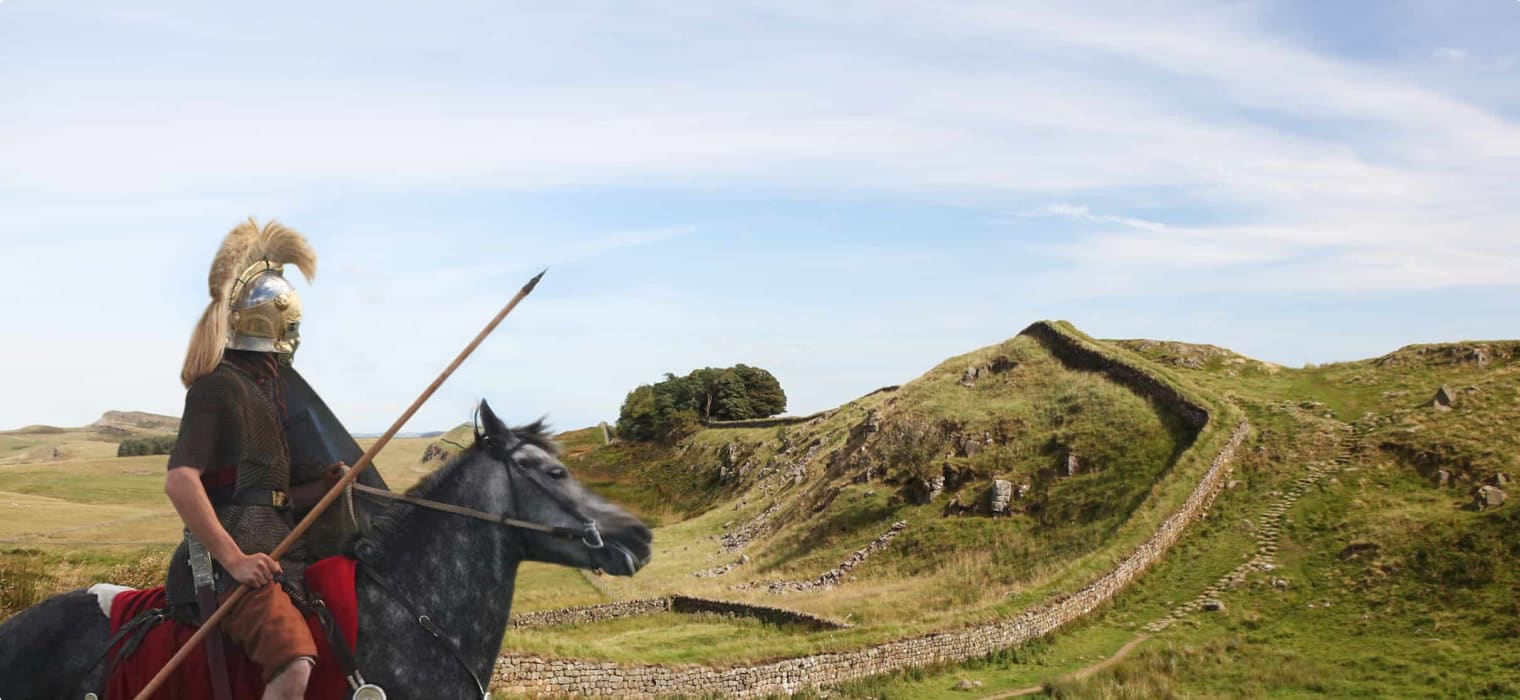
Venta Silurum of Roman Wales
In the village of Caerwent in the south of Wales stand the impressive remains of Venta Silurum, a market town established by the Romans in 75 CE. Named after the defeated local Silures tribe, it stood as their civitas capital during the Roman era in Britain. Established as an administrative centre, it was originally left undefended, until the second century when piratic raids led to the construction of basic defences for the now thriving town. These defences were later reinforced by the building of massive stone town walls and towers, which impressively still stand today largely intact.
This article explores the history of the ancient city of Venta Silurum. It is written as part of Odyssey Traveller’s series on lost ancient cities, with information drawn from Philip Matyszak’s Lost Cities of the Ancient World. The information is intended as background reading for our 22-day Roman Britain Tour for mature and senior travellers. During this tour, we explore the world of Roman Britain, occupied for some 400 years, with a lasting legacy of Roman sites, from roads to Hadrian’s wall to baths and more. Read on for more information about the Roman town Venta Silurum and the tour!
A New City
The Romans founded Venta Silurum in 75 CE, but not without strong resistance from the local tribe known as the Silures. Having invaded Britain in 43 CE, the Romans probably did not expect still to be fighting there two decades later. While the southeast fell reasonably quickly (and rose again briefly under Boudicca), the tribes in the highlands of present-day Wales fought the Romans every step of the way.
The Silures proved to be toughest nut for the Roman legions to crack. Ostorius Scapula, the second governor of Britain, proposed in frustration that the Silures should either be extirpated or moved wholesale to a different part of the empire. Scapula died in AD 52, exhausted by non-stop campaigning, and it took another generation before the Silures were forcibly persuaded to accept Roman rule.
Once they had pacified the Silures, the Romans moved the majority of the tribe’s remaining population from the hills and valleys of Gwent and Monmouth and moved them into the relatively flat – and much less defensible – lands of what is today the Vale of Glamorgan. It was here that they set up Venta Silurum as a small market town to act as the new tribal centre. The name translates as ‘the market of the Silures’, with ‘Venta’ having the same root as the modern word ‘vendor’.

The town was established essentially as an administrative centre for the defeated Silures, rather than for any military purposes. To make sure that the Silures continued to behave themselves, the Romans established a legionary base a day’s march away at Caerleon (Isca Augusta): not so close as to be oppressive, but near enough to quash any thoughts of making trouble. The Silures were considered as dediticii – people subject to Roman power who were neither slaves nor citizens.
The town was originally built on either side of the main road between Caerleon and Glevum (Gloucester). In this way the traffic could suitably impress the locals as the Roman’s military power and economic strength were paraded before them each day along the military supply route. Since it would defeat the purpose for which the town had been founded, the original site had no defensive walls.
The Growth of Venta Silurum
As the Pax Romana took root in Britain, Venta Silurum became an established civic centre, or civitas. At the height of the Roman Empire under the Antonine rulers of the second century, the town began to expand into a tidy little city.
There had always been a forum and a basilica, as these were part of the original function of the town (the forum as the marketplace and the basilica for administration and legal matters). Now, as the Silures were given increased control over their own affairs, the basilica was ornamented with Corinthian columns 8 metres (26 feet) high, and the civitas acquired an amphitheatre and public baths. A Romano celtic temple, possibly dedicated to Mars and the Celtic god Ocelus, was also built at a later date.

Eventually the growing sprawl along the road was regularized and the land was divided into some thirty residential plots, called insulae (literally ‘islands’) or City Blocks, of roughly equal size. The houses built on these plots were generally small and many served a dual purpose, consisting of shops or workshops at the front with living quarters in the rear. As time went on, some of the houses became larger and acquired luxury fittings such as mosaic floors and hypocausts (a type of underfloor heating highly desirable in the Welsh climate).
For the most part though the houses were simple and sparsely decorated. The Silures would never attain vast wealth and the refined Roman qualities that come with. In contrast to their wealthy close neighbours the Dobunni from Gloucestershire and Hereford & Worcester, who built many villas in the hills around their own civitas capital, there was no such pattern of villas surrounding Venta Silurum.
Even so, by the late second century the town was thriving, with a probable population of circa 2,000.. The location had now become valuable enough, and the Silures peaceable enough, to warrant the construction of an earthen ditch and rampart to defend the town against raiders. These initial basic defences enclosed and area of forty acres (eighteen hectares).
The Roman Retreat
Venta Silurum’s Roman connection was to come to an end in the third century, when the empire fell into a political and economic crisis. As a result the Second Augustan Legion was withdrawn from Caerleon. This may have prompted the building of massive stone walls in the mid-4th century. Surrounding the town in a rectangle, these walls may have originally reached a height in excess of eight metres (27 feet). Today, the walls are still standing largely intact, rising up to 5 metres (16 feet) in places.
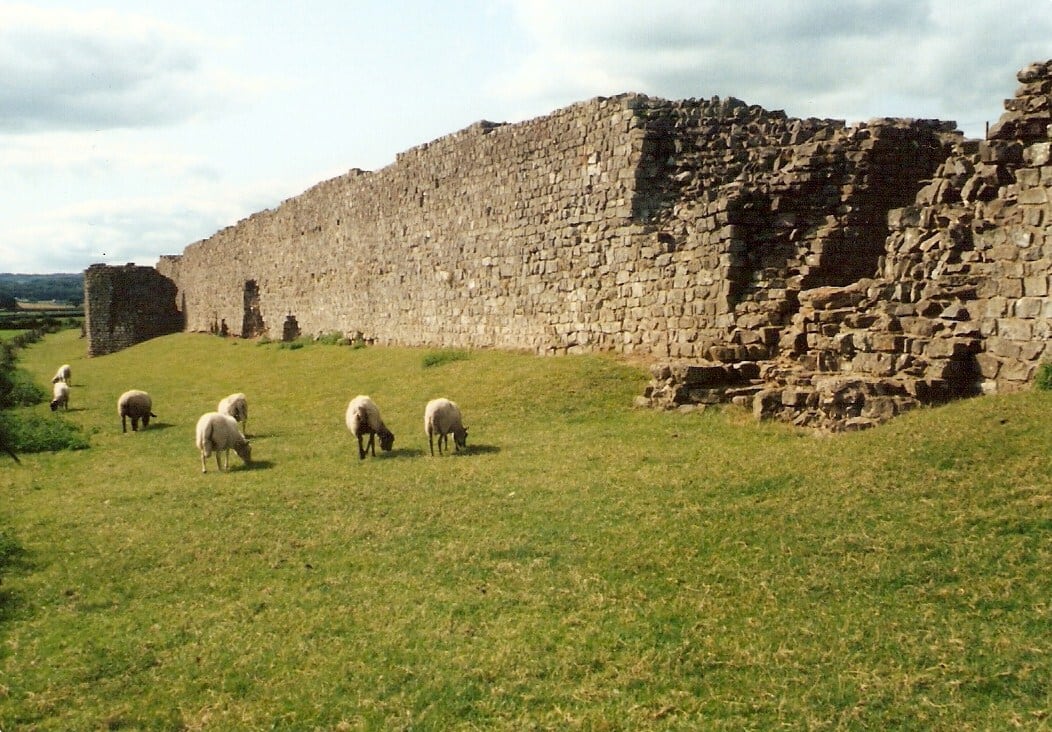
With the increasing threat from Irish pirates raiding up the River Severn, square towers were then added to the south and north walls – six to the south and five to the north. Late military equipment found at the site suggests that the town was also defended by a military garrison.
Nevertheless, Venta Silurum suffered from a design fault that was, literally, built in – the location had been deliberately chosen because it was hard to defend. Once the Roman legions left Britain, Venta Silurum was no longer viable. Eventually the townsfolk were forced to acknowledge this fact, and by the mid-5th century they had retreated to the greater security of the nearby hills. A monastery was later established by Saint Tathan around the 6th century, but by then Venta Silurum had long ceased to exist as a civic entity.
Venta Silurum Today
Though gone, Venta Silurum continued to loom large in the consciousness of the local people. The name ‘Venta’ mutated into ‘Guenta’ and gave its name to the emerging Welsh Kingdom of Gwent (initially called ‘Kingdom of Guenta’). As Britain became less unruly, a village grew on the site of the former Roman-era settlement. The village it self was called Caerwent, or ‘The casta/fort of Venta/Gwent’.
Because for a long time no-one dared occupy the flat lands upon which Venta Silurum had stood, the Roman walls were not mined for stone, as happened in many other places. As a result, the site retains what are, by some distance, the most impressive Roman walls surrounding any town in northern Europe.
Most of Venta Silurum is an open-air museum, though a sizeable portion of the site still remains to be excavated. Visits are possible all year round and there is a dedicated parking area near the church, which contains many Roman artefacts from the lost city.
Tour of Venta Silurum
Odyssey Traveller conducts a tour Venta Silurum as part of our 22-day Roman Britain Tour for mature and senior travellers. Join Odyssey Traveller on this small group tour as we explore the world of Roman Britain, tracing the visible remains of Roman occupation in England and Wales. The Romans occupied Britain for some 400 years and left behind a lasting legacy. While many buildings were pulled down and reused there is still a lot left for us to discover. Join us as we travel in the footsteps of the Roman legions, exploring what remains of their cities, fortresses, villas, bath houses and roads.
We take in the impressive ruins of Venta Silurum as part of a day trip from bath to Caerwent, before transferring to Caerleon, one of the largest and best-preserved Roman towns in Britain, where we will spend the night. Other highlights of the tour include:.
- A marvel of the Roman mosaics at Fishbourne and Lullingston.
- A exploration of the walls and forts situated on Hadrian’s mighty defensive line.
- A visit to the spot in York where Constantine was first hailed as Emperor.
Odyssey Traveller has been serving global travellers since 1983 with educational tours of the history, culture, and architecture of our destinations designed for mature and senior travellers. We specialise in offering small group tours partnering with a local tour guide at each destination to provide a relaxed and comfortable pace and atmosphere that sets us apart from larger tour groups. Tours consist of small groups of between 6 and 12 people and are cost inclusive of all entrances, tipping and majority of meals. For more information, click here, and head to this page to make a booking.
Articles on Wales published by Odyssey Traveller.
- History of Wales: The Definitive Guide
- Questions About Wales
- Snowdonia National Park, Wales
- Millennium Coastal Path, Wales
- Caernarfon Castle, Wales
External articles to assist you on your visit to Wales.
Related Tours
22 days
AugRoman Britain
Visiting England
On this small group tour explore with a tour director and local guides the world of Roman Britain. The Romans occupied Britain for some 400 years and left behind a lasting legacy from roads Hadrian's wall to Roman Baths many are UNSECO World heritage listed.
From A$13,855 AUD
View Tour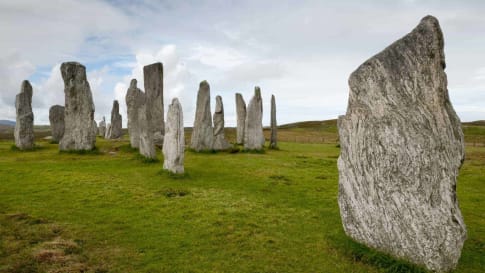
21 days
AugPrehistoric Britain small group history tour including standing stones
Visiting England, Scotland
This guided tour invites you to explore UNESCO World heritage sites at Skara Brae in the Orkneys, Isle of Skye, and Stonehenge in a prehistoric tour. This escorted tour has trips to key sites in Scotland, and the Irish sea in Wales such as Gower Peninsula and National Museum in Cardiff and England. Each day tour is supported by local guides.
From A$16,750 AUD
View Tour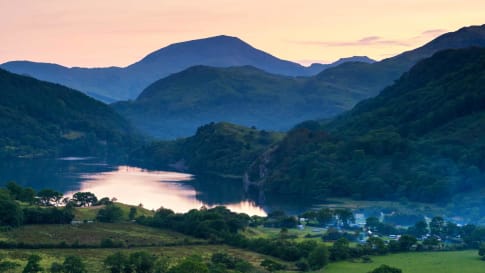
17 days
Mar, SepTour of Wales
Visiting Wales
Join Odyssey Traveller on this tour small group guided tour of Wales, an unforgettable travel experience through varied landscapes from south Wales to north Wales and back, travelling on the coast overlooking the Irish Sea and through picturesque Welsh villages, starting in Cardiff city centre.
From A$14,375 AUD
View Tour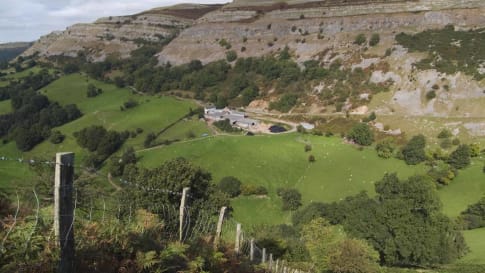
20 days
May, Sep, JunWalking Ancient Britain
Visiting England
A walking tour of England & the border of Wales. Explore on foot UNESCO World Heritage sites, Neolithic, Bronze age and Roman landscapes and the occasional Norman castle on your journey. Your tour director and tour guide walk you through the Brecon beacons, the Cotswolds and Welsh borders on this small group tour.
From A$13,995 AUD
View TourRelated Articles

Questions About Wales
Escorted small group tours for mature and senior travellers to Wales. Designed for couples and solo travellers who like to explore and enjoy learning as they travel to Cardiff, Betws-y-coed, the Brecon Beacons or Snowdonia National park and beyond.

Roman Villa of Desenzano, Italy
The Roman Villa of Desenzano del Garda is Northern Italy’s most important and best preserved great late antiquity villa extending over a hectare of prime lakeside land is explored on a small group tour.

The Roman Empire
The Roman Empire The Roman Empire at its peak covered an area of five million square kilometres (1.9 million square miles) and included territories in Asia, Africa, and the Western European nations around the Mediterranean…
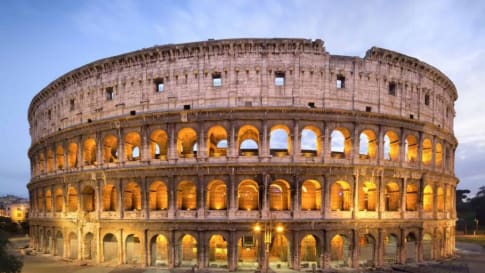
Who were the Roman Emperors? The Definitive Guide for Travellers
Who led Rome? From the 8th century BC, Ancient Rome grew from a tiny town on the Tiber River in modern-day Italy to a sprawling empire, that spanned across most of continental Europe, Britain, a…


